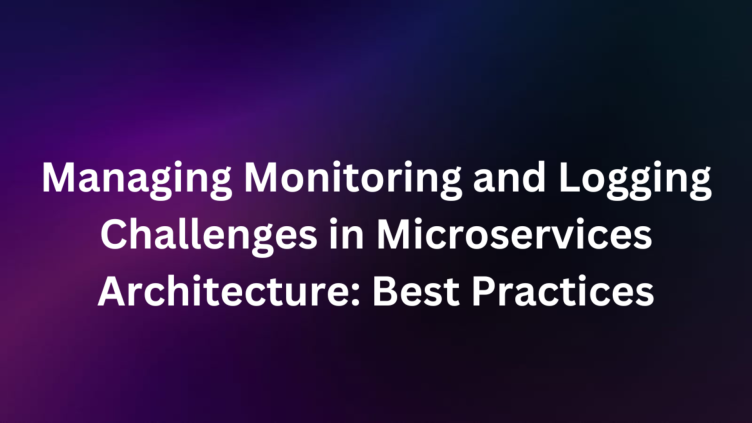
Managing Monitoring and Logging Challenges in Microservices Architecture: Best Practices. Subscribe to get the latest updates on container-native & DevOps news here.
Microservices architecture has become the preferred approach for building complex and scalable applications. While it has many advantages, it also brings some unique challenges in terms of monitoring and logging. As an experienced software engineer, I have faced these challenges firsthand and have learned some best practices for managing them. Today we will talk about, how to manage monitoring and logging challenges with microservices architecture.
Monitoring Challenges:
Monitoring microservices can be challenging due to their distributed nature. Here are some ways to manage monitoring challenges in a microservices architecture:
-
Implement Distributed Tracing: Use distributed tracing to track requests across multiple services. Distributed tracing allows you to identify the root cause of issues and optimize the performance of your microservices.
-
Use Metrics: Implement metrics to monitor the performance of your microservices. Metrics can provide valuable insights into the behavior of your microservices and help you optimize their performance.
-
Implement Centralized Monitoring: Use a centralized monitoring system to collect and analyze data from all your microservices. Centralized monitoring provides a holistic view of your microservices and simplifies the monitoring process.
Logging Challenges:
Logging is an essential aspect of microservices architecture, as it helps identify issues and provides insights into the behavior of your microservices. Here are some ways to manage logging challenges in a microservices architecture:
-
Implement Structured Logging: Use structured logging to make it easier to search and analyze logs. Structured logging allows you to filter logs based on specific criteria and provides a more organized approach to logging.
-
Implement Log Aggregation: Use log aggregation to collect and analyze logs from all your microservices. Log aggregation simplifies the logging process and provides a centralized view of all your microservices’ logs.
-
Use Log Forwarding: Use log forwarding to forward logs to a centralized system for storage and analysis. Log forwarding allows you to store logs in a centralized location and provides a more scalable approach to logging.
Monitoring and logging are critical aspects of the microservices architecture that can be challenging to manage. By following the best practices mentioned above, you can effectively manage monitoring and logging challenges and build robust microservices-based applications. Remember to implement distributed tracing, use metrics, and implement centralized monitoring to manage monitoring challenges. Also, implement structured logging, log aggregation, and log forwarding to manage logging challenges effectively. By doing so, you can ensure that your microservices architecture functions effectively and provides a seamless user experience.
Tutorials & Guides
- Provisioning and consuming multi-cloud infrastructure with Crossplane and Dap
- Knative serving in k0s
Top Reading Recommendations
- New research uncovers a developer experience gap for provisioning environments, resulting in modern application deployment delays
- GitOpsCon - The full schedule is live!
Upcoming Events
- Containerization 102: Security, Optimization, and Speed | Apr 6 - 7, 12:00 AM (PDT)
- Boosting Engineering Efficiency with OpenTelemetry, Keptn & Tyk | Apr 6 - 7, 12:00 AM (PDT)
